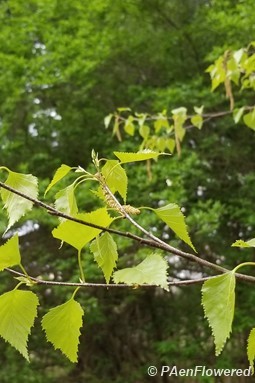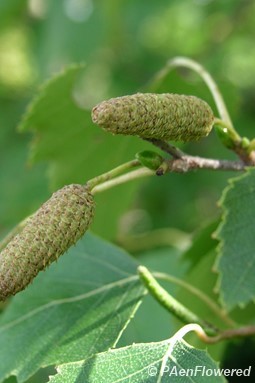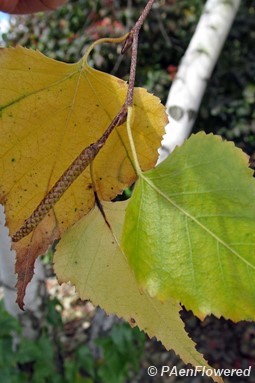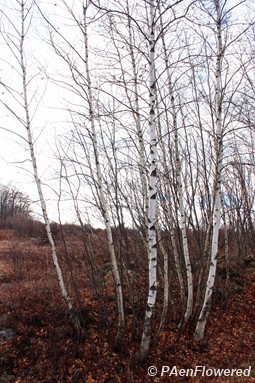Betula populifolia
A medium-sized birch with white bark and heart-shaped leaves
Betula populifolia gray birch
This species of deciduous tree has white bark with triangular black patches. Unlike the related American white birch, this bark tends not to naturally peel away in strips. This species is a small to medium-sized tree, growing 20-30 feet on average.
The leaves are roughly triangular, toothed and sharp-pointed at the tips. These leaves are 1 to 4 inches long. The white birch leaves are more heart-shaped. The gray birch flowers in April or May and forms fruit in September. The wood is used mainly for fuel and charcoal, though it can be crafted into small tools or made into plywood. Ruffed grouse and songbirds may eat the seeds and deer will browse on the twigs. The tree often has multiple trunks that grow from an old stump. The flowers are in the form of catkins. The female catkin is erect and about 1/3 inch long. After fertilization they become 2/3 inch long and hang downward in clusters of 2 or 3. The male catkin hangs downwards from the branch tips and is up to 3 inches long. The fruit consists of multiple winged seeds that form under the scales of the female flower.
The normal range of the grey birch is from Nova Scotia to eastern Pennsylvania, with a few cultivated populations in Indiana, North Carolina and Virginia. It has been cultivated in this region. It tends to be a pioneer species in areas that have been burned or in abandoned fields.
Habitat & Range
Common in old fields, open woods, strip mines, and other disturbed sites. Likes dry soil.
Mostly found in the east of the state.
| EMP: | FAC |
|---|---|
| NCNE: | FAC |
Phenology
Flowers in April or May.
Fruits in September.
Plant Codes
S-rank: S5 (Secure)
G-rank: G5 (Secure)












Comments
Have you spotted this plant in your area? We'd love to hear about your experience! Share your comments or questions about the plant below. Comments are moderated before posting.